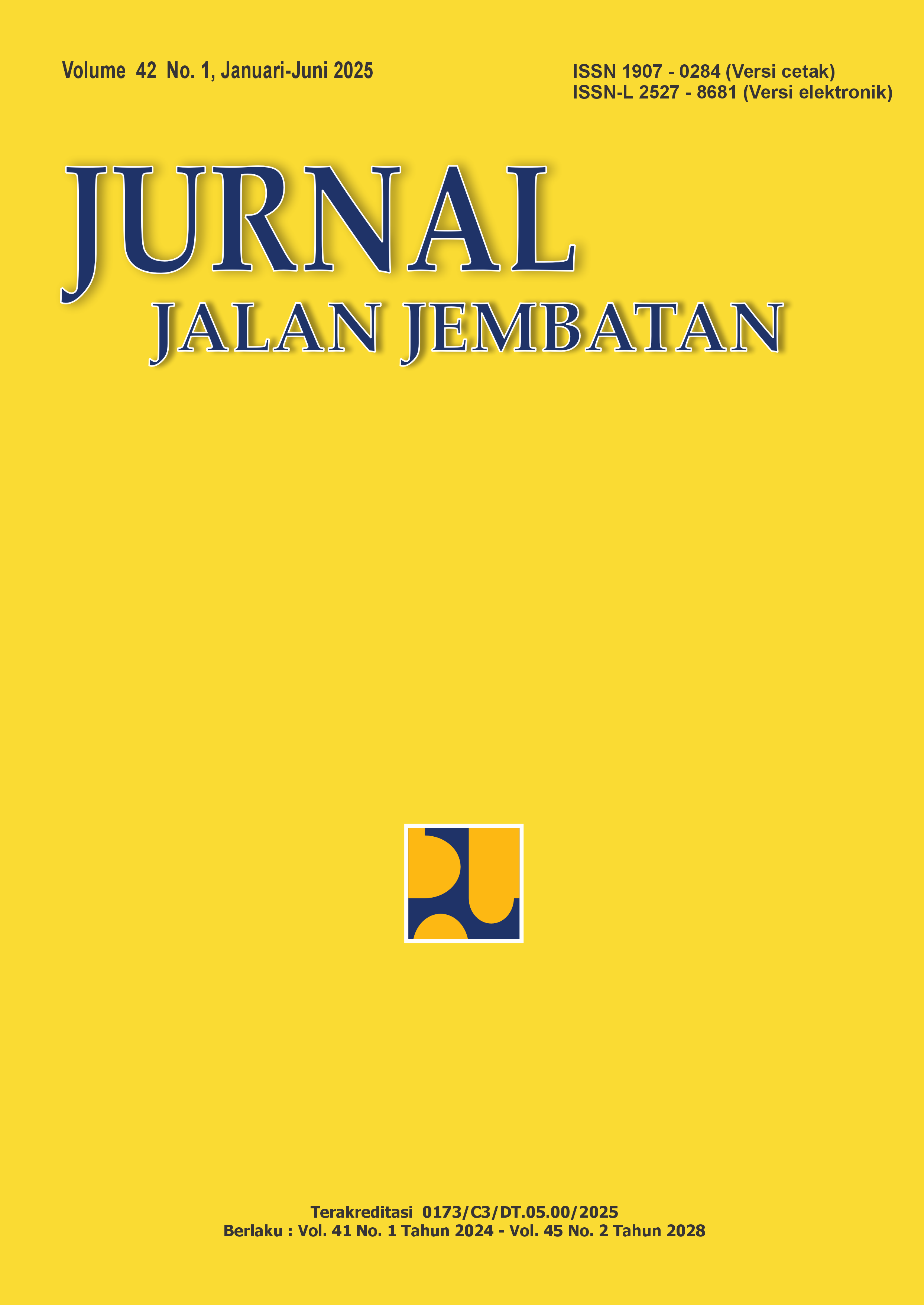KUAT TEKAN PADA CAMPURAN BETON DENGAN BAKTERI YANG DIINOKULASI DAN LIMBAH BENDA UJI
Main Article Content
Abstract
Concrete is a material commonly used as road and bridge structure and is very prone to cracking in hard-to-reach areas. Innovation in the form of self-healing concrete (SHC) can repair its cracks. Meanwhile, concrete waste remains a challenge that needs to be addressed and utilized to reduce the reliance on natural materials. This study utilises Bacillus megaterium bacteria as a self-healing agent and concrete waste as a substitute for coarse aggregate applied in regular concrete (20 MPa) with a mix design based on ACI 211.1-91. Variations in bacterial content are 2% and 4% of the weight of water, and variations in concrete waste are 25%, 50%, and 75% of the weight of coarse aggregate with a substitution of 10% fly ash and 2% calcium lactate of the weight of cement. The results showed an increase in compressive strength of 5.39% from 21.5 MPa for waste concrete to 20.4 MPa but a decrease of 0.46% from 21.6 MPa for regular concrete. Then, the bacteria showed self-healing or covered the cracks on the seventh day after testing. Additionally, the bacteria were able to restore the strength of the concrete by 80.22% to 99.19% after retesting on the 28th day. Therefore, concrete with bacteria based on concrete waste has the potential to be applied to road and bridge construction.
Kata Kunci: bacillus megaterium, beton normal, kuat tekan, limbah beton, self-healing concrete.
Keywords: bacillus megaterium, compressive strength, regular concrete, self-healing concrete, waste concrete
Article Details

This work is licensed under a Creative Commons Attribution-NonCommercial-ShareAlike 4.0 International License.
Authors who publish in this journal agree to the following terms:
-
Authors retain copyright and grant the journal the right of first publication with the work simultaneously licensed under a Creative Commons Attribution License, which allows others to share the work with acknowledgment of the work's authorship and initial publication in this journal.
-
Authors may enter into additional contractual arrangements for the non-exclusive distribution of the journal's published version of the work (e.g., post it to an institutional repository or publish it in a book), with acknowledgment of its initial publication in this journal.
-
Authors are permitted and encouraged to post their work online (e.g., in institutional repositories or on their website) as it can lead to productive exchanges, as well as earlier and greater citation of the published work.
Each submitted manuscript must be accompanied by a "Manuscript Originality Statement" and a "Copyright Transfer Statement".

